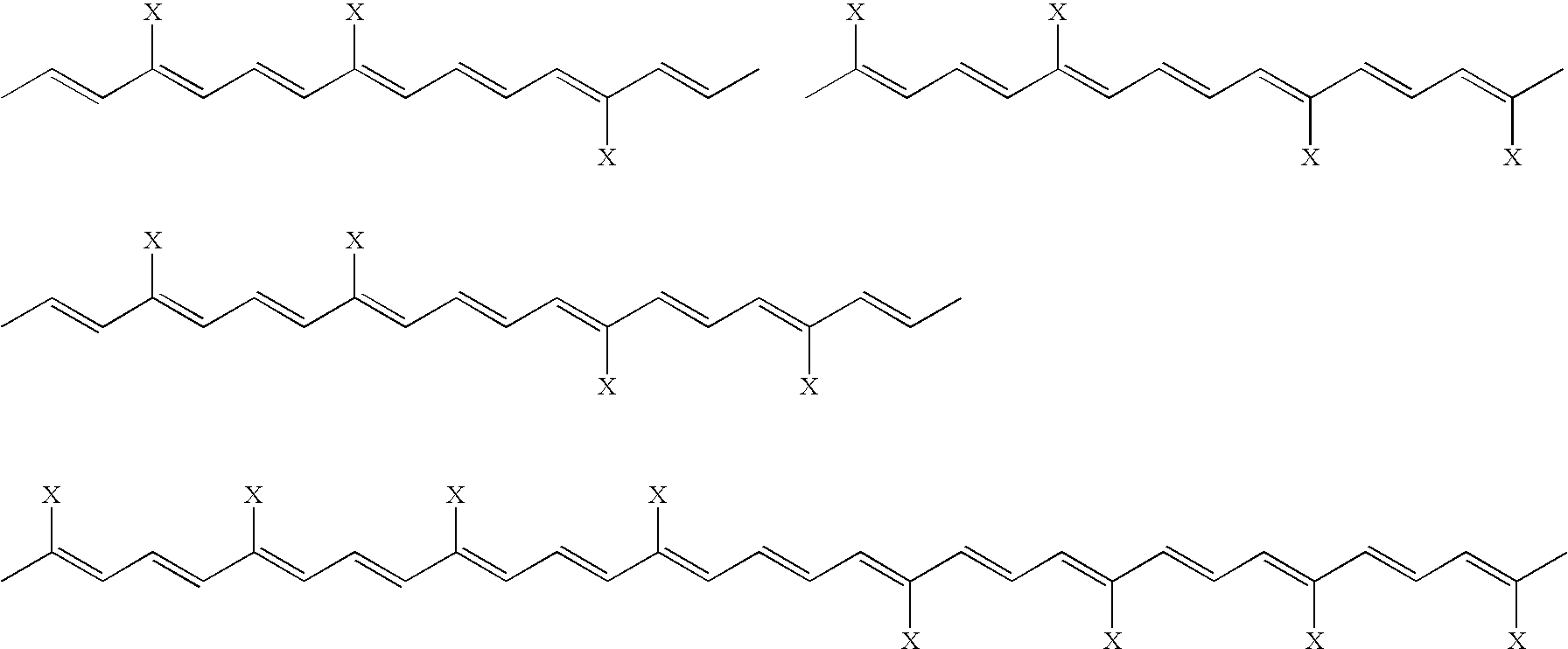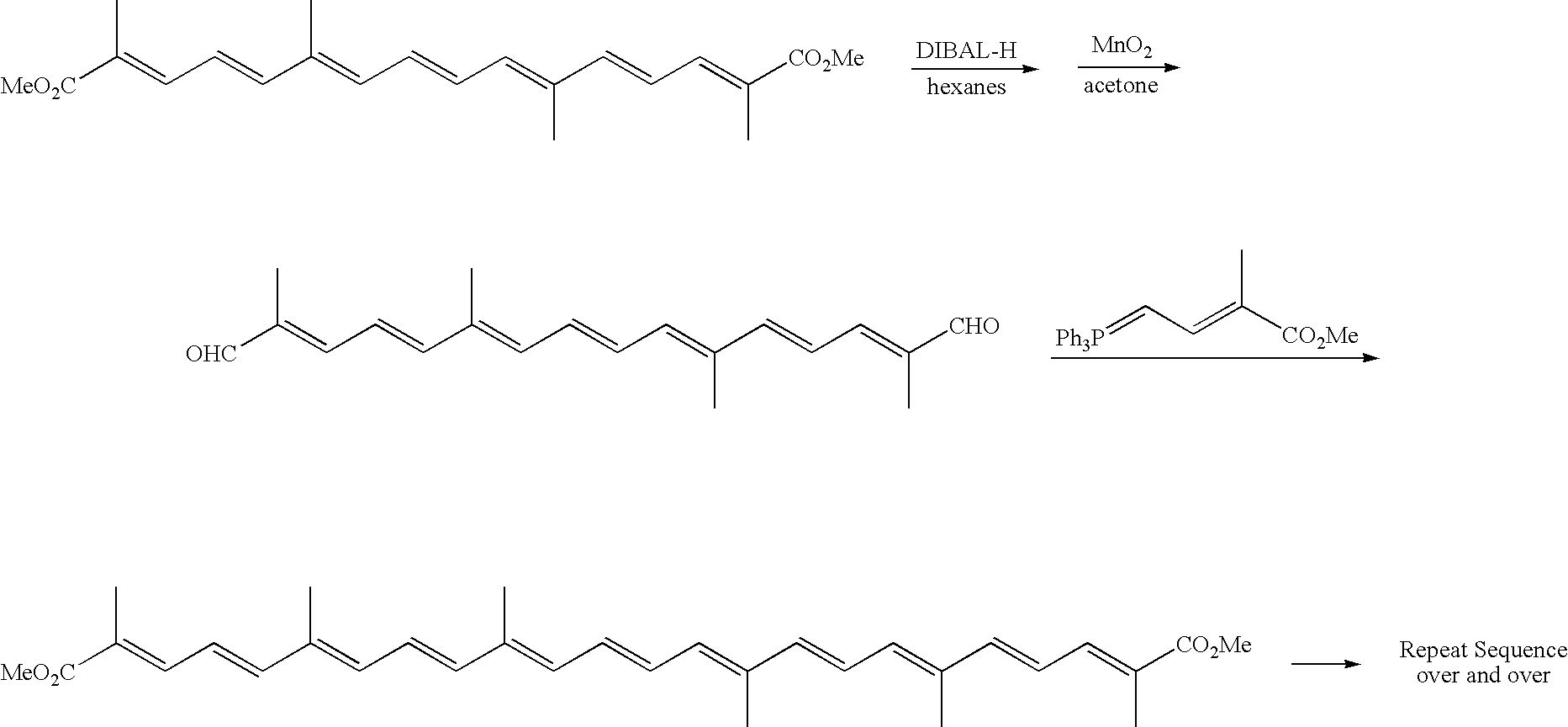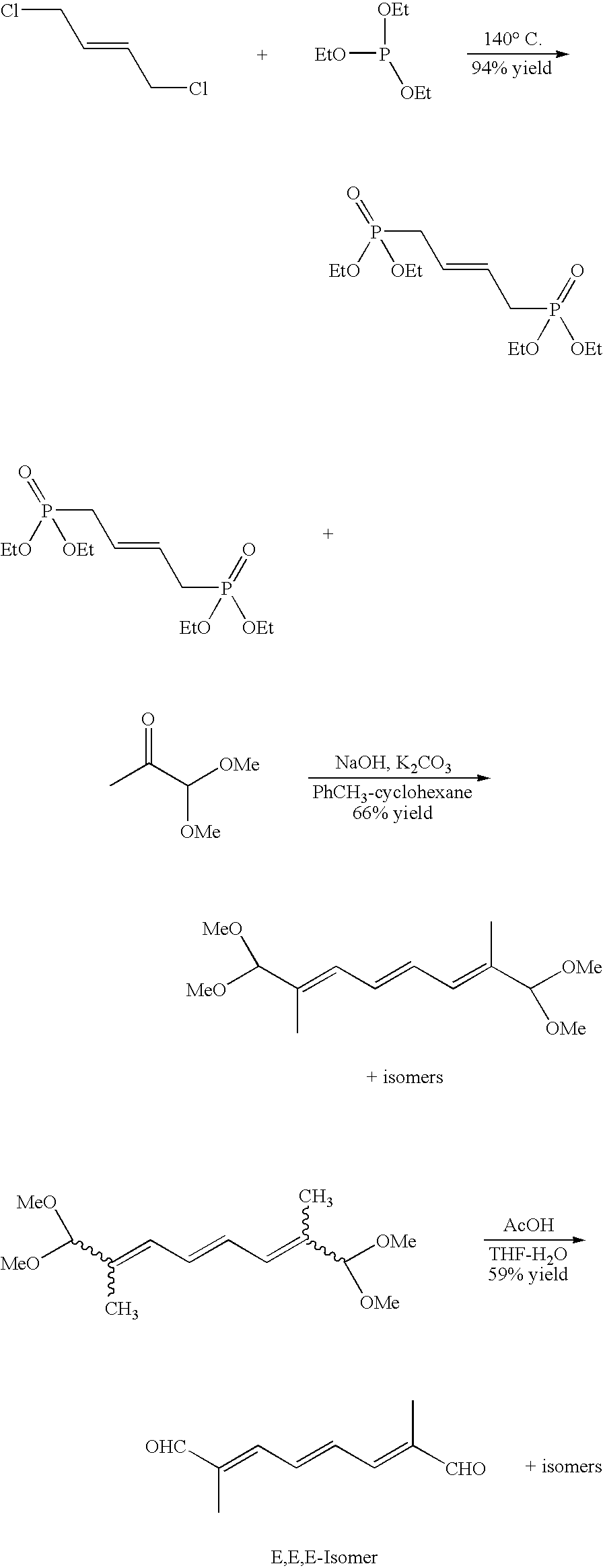Bipolar trans carotenoid salts and their uses
a carotenoid salt and bipolar technology, applied in the field of bipolar trans carotenoid salts, can solve the problems of reduced blood flow, difficult formulation of biological uses of crocetin, and only sparingly soluble in water
- Summary
- Abstract
- Description
- Claims
- Application Information
AI Technical Summary
Benefits of technology
Problems solved by technology
Method used
Image
Examples
example 1
[0087] Synthesis of Trans Sodium Crocetinate
[0088] Trans sodium crocetinate is synthesized by coupling a symmetrical C10 dialdehyde containing conjugated carbon-carbon double bonds with [3-carbomethoxy-2-buten-1-ylidene]triphenylphosphorane. This product is then saponified using a solution of NaOH / methanol.
[0089] To ethyl bromoacetate, trephenylphosphine dissolved in ethyl acetate (at a concentration of around 2 moles / liter) is slowly added. After isolation, and treatment with base, the product can be treated with methyl iodide, followed by caustic, to form the phosphorane. The basic compound to form the carotenoid skeleton can be made starting with a ring compound such as furan in this case. Furan is reacted with bromine and methanol, followed by a selective deprotonation step to form a monoaldehyde. This is then coupled with the phosphorane. Acidic conditions deprotected the other dimethyl acetal group to afford the free aldehyde. This compound is then reacted again with the sa...
example 2
[0160] Synthesis of Trans Potassium Norbixinate
[0161] Trans potassium norbixinate is synthesized by coupling a symmetrical C20 dialdehyde containing conjugated carbon-carbon double bonds with [1-(ethoxycarbonyl)methylidene]triphenylphosphorane. The preparation of this compound is similar to that listed previously for trans sodium crocetinate, except that the furan starting material is replaced with the appropriate ringed structure. This product is then saponified using a solution of KOH / methanol.
example 3
[0162] Synthesis of a Longer BTCS
[0163] The above compound is synthesized by adding a symmetrical C10 dialdehyde containing conjugated carbon-carbon double bonds to an excess of [3-carbomethoxy-2-buten-1-ylidene]triphenylphosphorane. The preparation of this compound is similar to that listed previously for trans sodium crocetinate, except that the furan starting material is replaced with the appropriate ringed structure. The trans 40-carbon product is then isolated using a procedure such as chromatography. This product is then saponified using a solution of NaOH / methanol.
PUM
| Property | Measurement | Unit |
|---|---|---|
| solubility | aaaaa | aaaaa |
| solubility | aaaaa | aaaaa |
| UV wave length | aaaaa | aaaaa |
Abstract
Description
Claims
Application Information
 Login to View More
Login to View More - R&D
- Intellectual Property
- Life Sciences
- Materials
- Tech Scout
- Unparalleled Data Quality
- Higher Quality Content
- 60% Fewer Hallucinations
Browse by: Latest US Patents, China's latest patents, Technical Efficacy Thesaurus, Application Domain, Technology Topic, Popular Technical Reports.
© 2025 PatSnap. All rights reserved.Legal|Privacy policy|Modern Slavery Act Transparency Statement|Sitemap|About US| Contact US: help@patsnap.com



